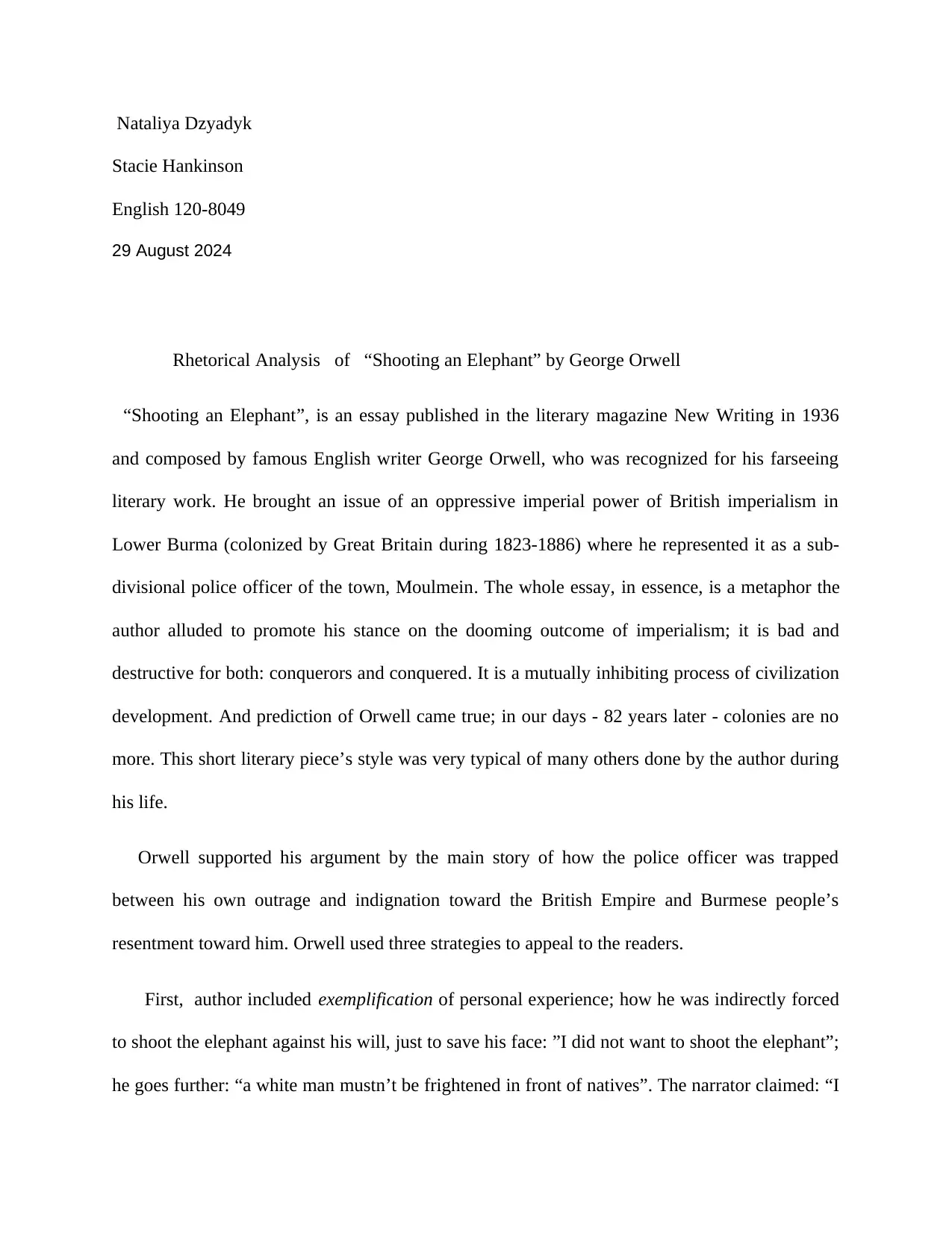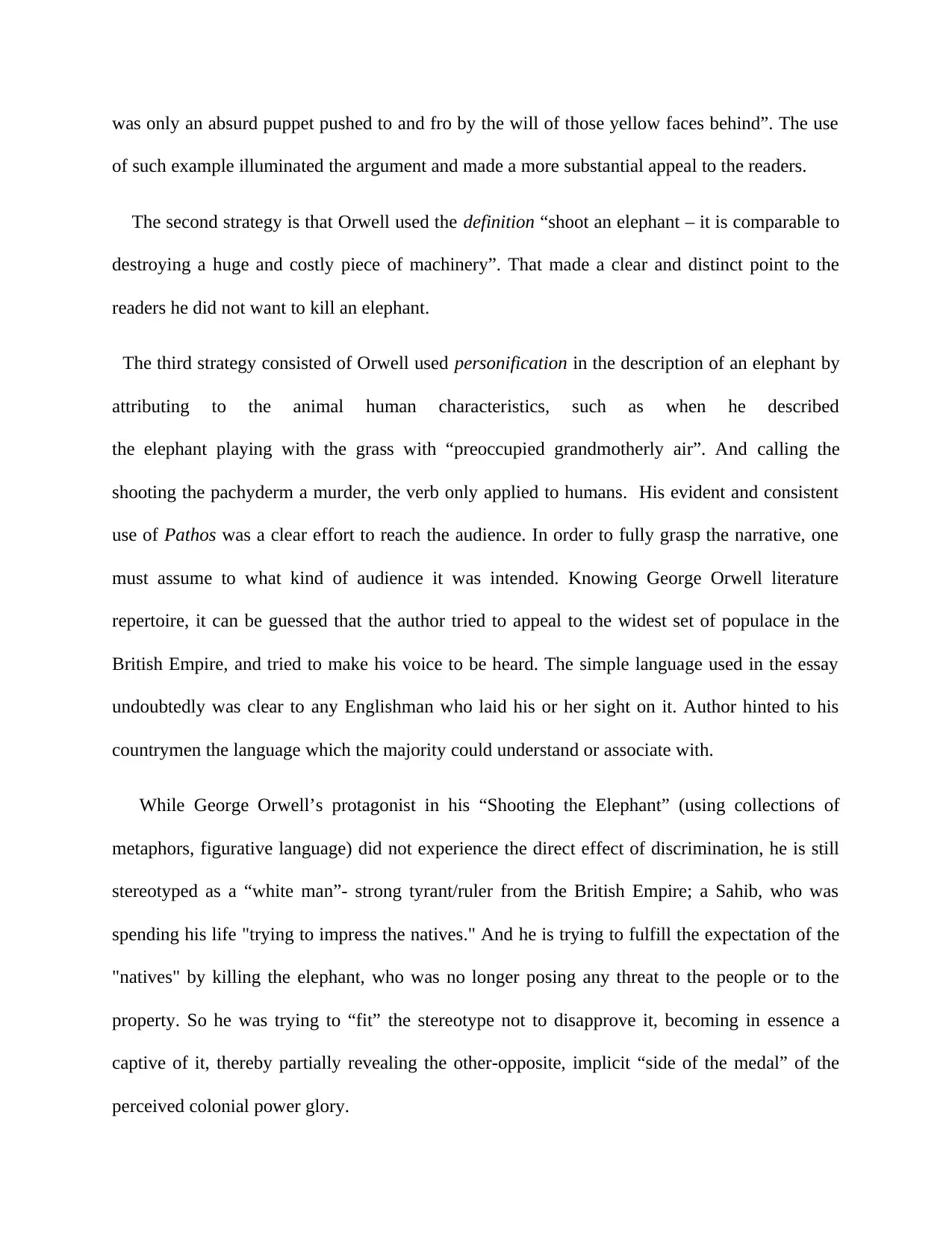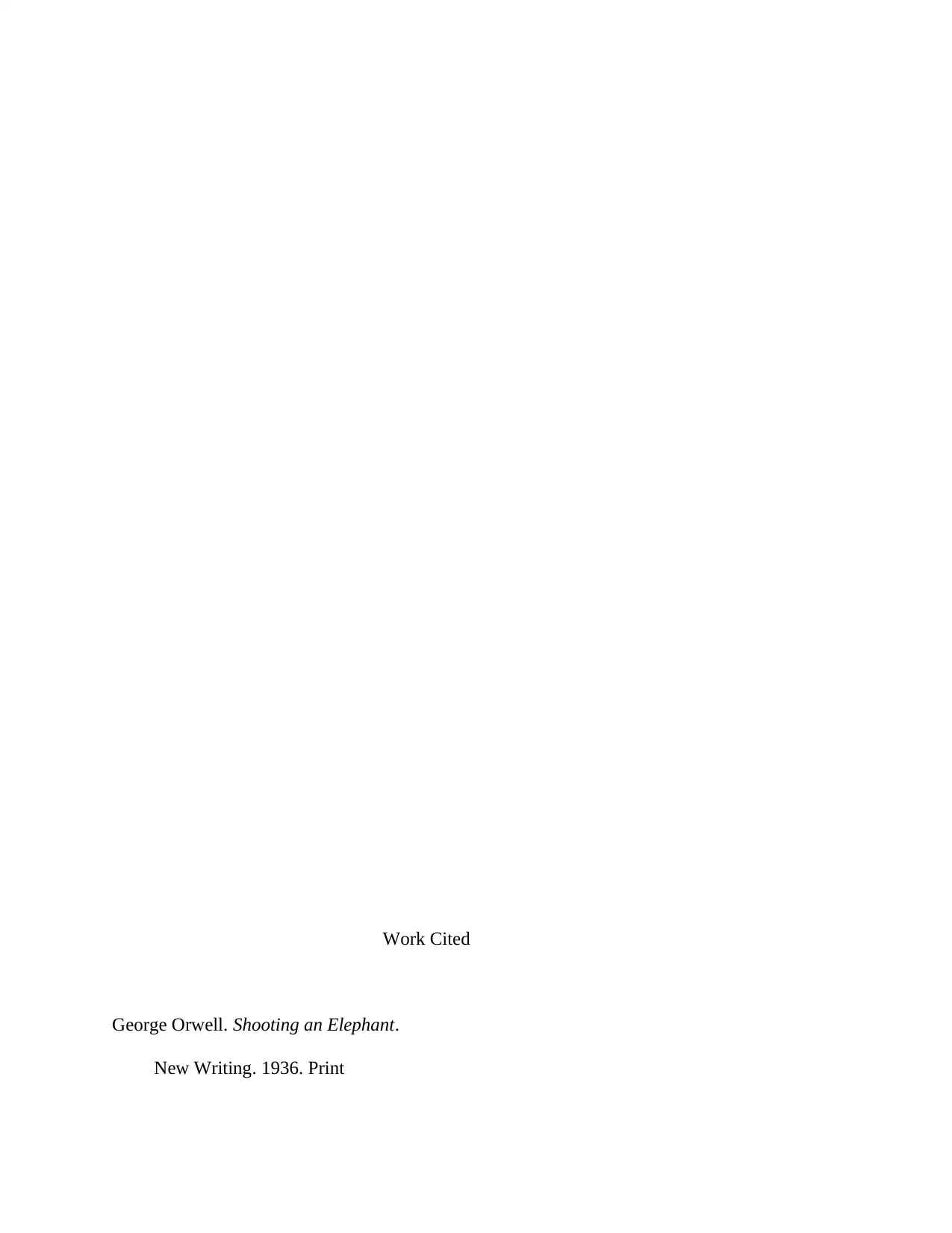English 120: Analysis of Rhetoric in Orwell's 'Shooting an Elephant'
VerifiedAdded on 2023/06/07
|5
|911
|284
Essay
AI Summary
This essay offers a comprehensive rhetorical analysis of George Orwell's 'Shooting an Elephant.' It examines the essay's historical context, focusing on British imperialism in Burma, and explores Orwell's central metaphor for the destructive nature of imperialism on both the colonizers and the colonized. The analysis delves into Orwell's use of rhetorical strategies, including personal experience, definition, and personification to appeal to the readers. It also considers the intended audience and the use of pathos to evoke reader emotions. The essay highlights Orwell's depiction of the protagonist's internal conflict and the impact of racial stereotyping, ultimately revealing the complexities of colonial power dynamics and the protagonist's struggle to maintain his image. The essay concludes by reflecting on the protagonist's motivations for killing the elephant and the broader implications of the act.
1 out of 5










![[object Object]](/_next/static/media/star-bottom.7253800d.svg)